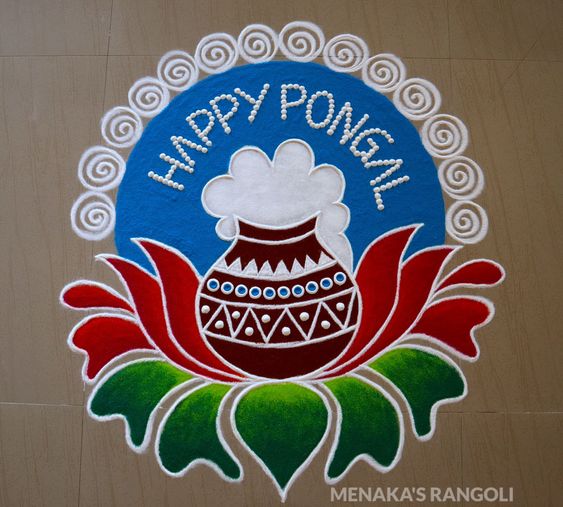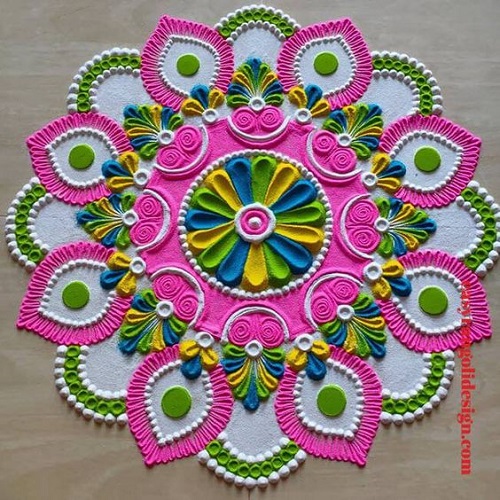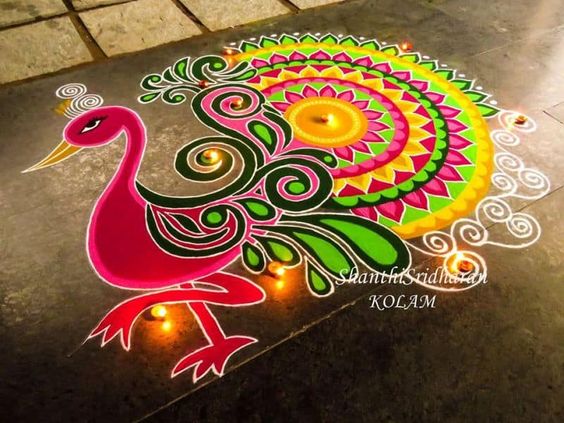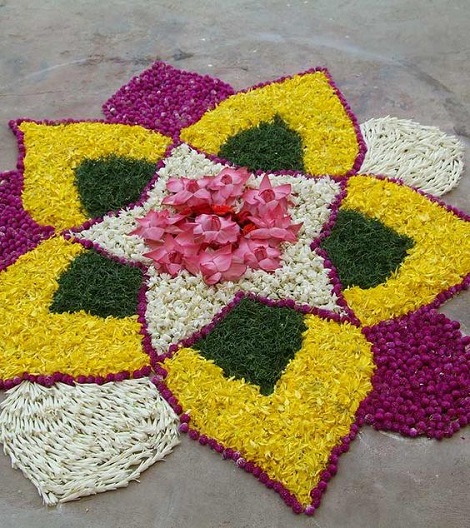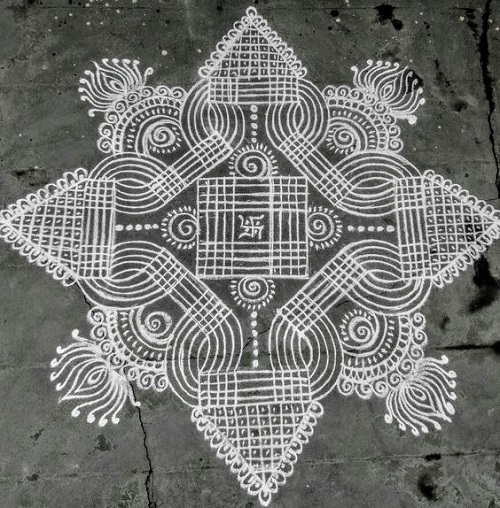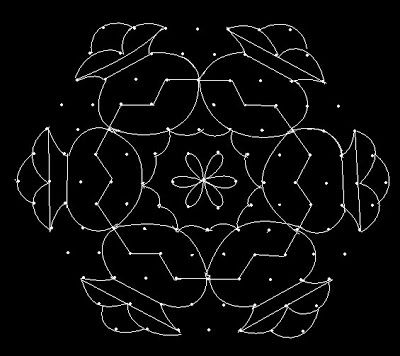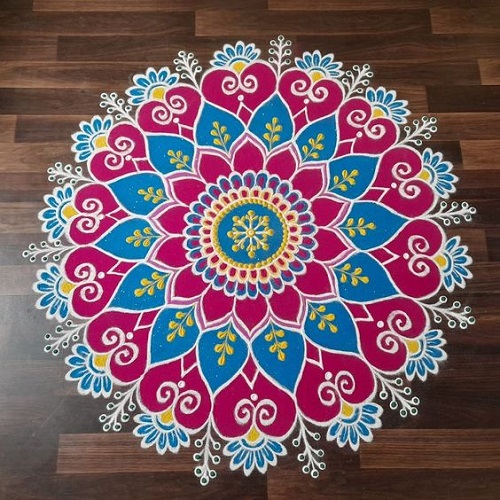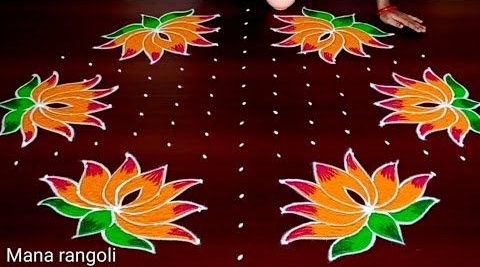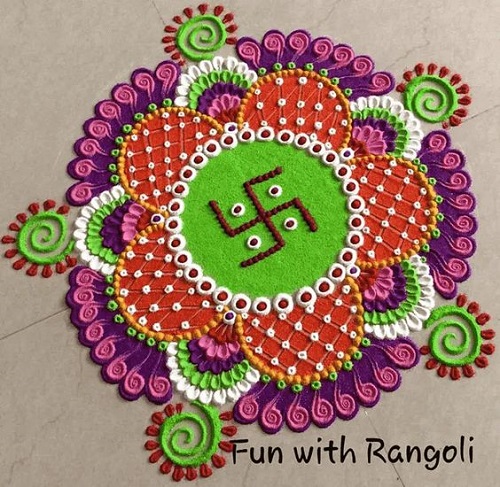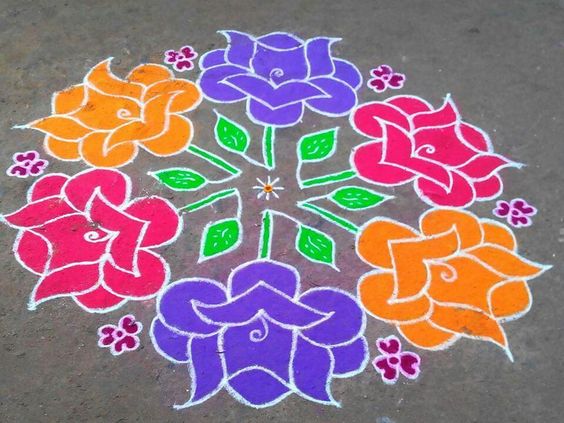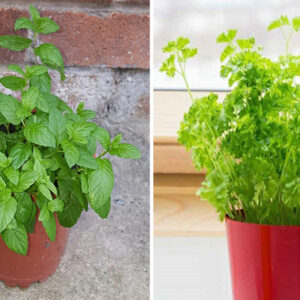Welcome to the enchanting world of Sankranti Rangoli Designs, where tradition meets creativity in a kaleidoscope of vibrant hues and intricate patterns. As the auspicious festival of Sankranti approaches, the artistry of Rangoli takes centre stage, bringing homes to life with its symbolic designs. In this article, we’ll explore the significance of Sankranti Rangoli designs, delve into various traditional and contemporary patterns, and offer insights into how you can infuse this ancient art form into your celebrations.
Simple and Best Sankranti Muggulu Designs In 2024:
1. Sankranti Rangoli Design With Kalash:
Sankranti Rangoli designs featuring the auspicious Kalash symbolize an infusion of divine blessings and prosperity into festive celebrations. The Kalash, a sacred vessel often depicted with coconut and mango leaves, holds immense significance in Hindu culture as a symbol of abundance and purity. Incorporating the Kalash into Sankranti Rangoli designs adds a spiritual touch, signifying a bountiful harvest and the blessings of the deities.
The intricate patterns surrounding the Kalash typically include geometric shapes, traditional motifs, and vibrant colours, creating a visually stunning and culturally rich display. This design not only pays homage to tradition but also serves as a beautiful representation of the festive spirit during the auspicious occasion of Sankranti.
2. Floral Sankranti Rangoli Designs:
Floral Sankranti Rangoli designs are a celebration of nature’s beauty and the vibrant colours of the harvest season. Incorporating an array of flowers into these intricate patterns transforms the Rangoli into a breathtaking tapestry of fragrant blooms. Marigolds, roses, and jasmine blossoms often take centre stage, symbolizing prosperity, purity, and the joyous spirit of Sankranti.
The meticulous arrangement of petals and leaves creates a harmonious blend of colours and shapes, forming patterns that radiate elegance and grace. Floral Sankranti Rangoli designs not only capture the essence of the festival but also evoke a sense of serenity and natural abundance, making them a delightful addition to homes during this auspicious time.
3. Peacock Sankranti Muggulu:
Peacock Sankranti Muggulu, with their graceful and vibrant depictions of peacocks, adds a touch of regality to the traditional art form of Rangoli during the Sankranti festival. The peacock considered a symbol of beauty, elegance, and auspiciousness in Indian culture, becomes the focal point of these designs. Muggulu artists skillfully craft the majestic bird using a myriad of colours, intricately detailing its feathers and showcasing its radiant plumage.
The peacock’s presence in Sankranti Muggulu symbolizes the celebration of nature, embodying the free spirit and vibrancy of the festival. As these intricate patterns grace doorsteps and courtyards, they not only infuse homes with artistic allure but also carry a deeper cultural significance, making Peacock Sankranti Muggulu a cherished tradition during this festive season.
4. Marigold Rangoli Design For Sankranti:
A Marigold Rangoli design for Sankranti brings forth a burst of vibrant hues and the enchanting fragrance of marigold blossoms, creating a visual spectacle that perfectly complements the festive spirit. Marigolds, known for their bright orange and yellow hues, symbolize positivity, prosperity, and the sun’s radiance. In this Sankranti Rangoli, the marigold flowers are meticulously arranged in intricate patterns, forming geometric shapes and traditional motifs.
The golden backdrop of marigold petals not only adds a touch of opulence to the design but also represents the abundance associated with the harvest season. Creating a Marigold Rangoli for Sankranti is not just a visual treat; it’s a homage to nature’s beauty and a reflection of the joyous atmosphere that accompanies this auspicious festival.
5. Rice Flour Sankranti Rangoli Designs 2024:
Rice Flour Sankranti Rangoli designs, steeped in tradition, showcase the timeless artistry and cultural significance of this ancient practice. Crafted using rice flour, these designs often feature intricate patterns that are a blend of geometric shapes, traditional motifs, and symbolic elements associated with the festival of Sankranti. The white canvas of rice flour creates a stark and beautiful contrast against the vibrant colours, lending an elegant simplicity to the overall composition.
As a tradition passed down through generations, creating Sankranti Rangoli with rice flour is not merely an artistic endeavour but a spiritual one, signifying purity and invoking blessings for the household. The ephemeral nature of rice flour Rangoli adds a touch of impermanence to the art form, mirroring the transient nature of life and the cyclical rhythm of festivals like Sankranti.
6. Sankranti Muggulu With Dots:
Sankranti Muggulu with dots represents a captivating fusion of precision and creativity in the realm of traditional Indian art. Muggulu, a form of Rangoli, acquires a distinctive allure when designed with the inclusion of dots. The meticulous arrangement of dots serves as a foundation for intricate patterns, allowing artists to create symmetrical and visually stunning designs. During Sankranti, these dotted Muggulu often feature auspicious symbols, traditional motifs, and intricate geometric shapes that hold cultural significance.
The careful joining of dots transforms into a mesmerizing tapestry, embodying the festive spirit and reflecting the cultural richness associated with the harvest season. Sankranti Muggulu with dots not only showcases the artist’s skill but also serves as a testament to the profound connection between tradition, creativity, and the joyous celebrations of the festival.
7. Rangavalli Muggulu For Sankranthi:
Rangavalli Muggulu for Sankranti encapsulates the essence of the festival in a vibrant display of artistry and tradition. Originating from the southern regions of India, Rangavalli Muggulu is intricate and colourful patterns drawn on the ground, typically adorning doorsteps and courtyards during Sankranti. These designs often incorporate geometric shapes, traditional symbols, and cultural motifs, creating a visual tapestry that narrates stories of celebration and abundance.
What sets Rangavalli Muggulu apart is the use of rice flour or chalk, carefully applied to create elaborate patterns that honour the agricultural significance of Sankranti. The ritual of crafting Rangavalli Muggulu not only adds an aesthetic dimension to the festivities but also serves as a form of reverence for nature’s blessings and the prosperity associated with the harvest season.
8. Sankranthi Small Rangoli Designs With Dots:
Sankranti small Rangoli designs with dots exemplify the charm of simplicity and precision in celebrating the festival’s joy. These intricate patterns, crafted with a foundation of dots, showcase the artistry of individuals who relish creating beautiful yet smaller-scale designs. The incorporation of dots allows for a structured layout, giving rise to symmetrical and aesthetically pleasing arrangements.
Sankranti’s cultural motifs, auspicious symbols, and representations of harvest are delicately portrayed within these compact designs, making them a delightful addition to doorsteps and entrances during the festive season. Despite their size, these small Rangoli patterns play a significant role in symbolizing the spirit of Sankranti, blending tradition with the creative expression of individuals who partake in the art form to mark the auspicious occasion.
9. Swastik Sankranthi Rangoli Designs:
Swastik Sankranti Rangoli designs infuse the traditional art form with profound cultural symbolism, bringing forth an auspicious and harmonious touch to the festive celebrations. The Swastik, a sacred symbol in Hinduism representing well-being and good fortune, takes centre stage in these designs. Crafted with precision and adorned with vibrant colours, Swastik Sankranti Rangolis often feature intricate patterns and embellishments that radiate positivity.
The Swastik’s four arms symbolize the four cardinal directions, conveying a sense of balance and cosmic order. As households embellish their entrances with these Rangolis during Sankranti, the Swastik becomes a beacon of auspicious energy, inviting prosperity and blessings into the home. The amalgamation of tradition and cultural significance in Swastik Sankranti Rangoli designs serves as a beautiful expression of reverence and festivity during this joyous occasion.
10. New Sankranthi Rangoli Designs:
New Sankranti Rangoli designs herald a fresh wave of creativity, blending contemporary elements with traditional aesthetics to redefine the art form for the modern celebrant. As the festival approaches each year, artists and enthusiasts eagerly introduce innovative patterns, colours, and motifs into their Rangoli creations, adding a dynamic and evolving dimension to this age-old tradition. The designs may feature a fusion of geometric shapes, abstract art, and intricate detailing, showcasing the versatility of Sankranti Rangoli.
The use of eco-friendly materials and a broader colour palette further contribute to the contemporary flair of these designs. New Sankranti Rangoli designs not only captivate the eye with their uniqueness but also reflect the evolving spirit of celebration and artistic expression in tune with the times. Embracing the new while honouring tradition, these Rangoli designs become a vibrant testament to the enduring charm of Sankranti festivities.
As we conclude our exploration of Sankranti Rangoli Designs, it’s evident that this ancient art form not only adds aesthetic charm but also plays a pivotal role in preserving cultural traditions. From the symmetrical beauty of traditional motifs to the limitless possibilities of modern designs, Sankranti Rangoli encapsulates the spirit of the festival and provides a canvas for artistic expression. Whether you’re a seasoned Rangoli artist or a beginner, let this festive season be an opportunity to create memories and share the joy of tradition through the vibrant colours of Sankranti Rangoli.
FAQs:
Q1: What materials are commonly used for creating Sankranti Rangoli designs?
A1: Traditional Sankranti Rangolis often utilize materials like coloured rice, dry flour, flower petals, and coloured sand. However, modern interpretations may incorporate additional elements such as coloured powders and even eco-friendly alternatives.
Q2: Are there specific symbols or motifs associated with Sankranti Rangoli designs?
A2: Yes, Sankranti Rangoli designs often feature symbols like flowers, birds, religious symbols, and geometric patterns. These motifs symbolize prosperity, good luck, and the harvest season, aligning with the festive spirit of Sankranti.
Q3: Can anyone create Sankranti Rangoli, or does it require artistic skills?
A3: Sankranti Rangoli is accessible to everyone, regardless of artistic skills. While intricate patterns may require practice, simple designs with basic shapes and colours can be equally beautiful. It’s a delightful activity for individuals and families to partake in during the festive season.
Q4: How long do Sankranti Rangoli designs typically last?
A4: The lifespan of a Sankranti Rangoli depends on the materials used. Traditional designs with flower petals may last a day, while those created with coloured powders or sand can endure for several days, provided they are not disturbed.
Q5: Are there regional variations in Sankranti Rangoli designs?
A5: Yes, different regions in India may have unique styles and variations of Sankranti Rangoli designs, influenced by local traditions and cultural nuances. Exploring these regional differences adds a fascinating dimension to the diverse world of Sankranti Rangoli.

